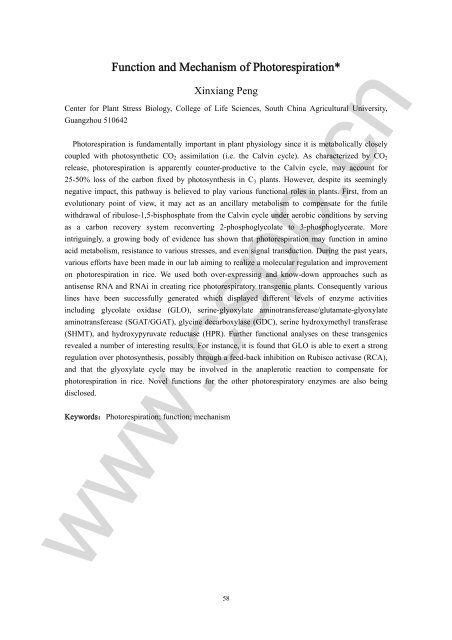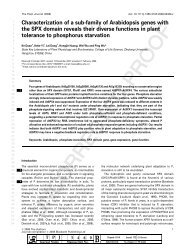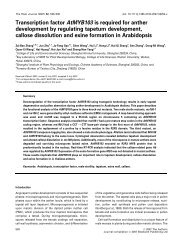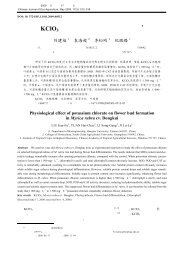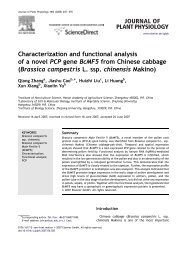Untitled - ä¸å½æ¤ç©ççä¸ååçç©å¦å¦ä¼
Untitled - ä¸å½æ¤ç©ççä¸ååçç©å¦å¦ä¼
Untitled - ä¸å½æ¤ç©ççä¸ååçç©å¦å¦ä¼
Create successful ePaper yourself
Turn your PDF publications into a flip-book with our unique Google optimized e-Paper software.
Function and Mechanism of Photorespiration*<br />
Xinxiang Peng<br />
Center for Plant Stress Biology, College of Life Sciences, South China Agricultural University,<br />
Guangzhou 510642<br />
Photorespiration is fundamentally important in plant physiology since it is metabolically closely<br />
coupled with photosynthetic CO 2 assimilation (i.e. the Calvin cycle). As characterized by CO 2<br />
release, photorespiration is apparently counter-productive to the Calvin cycle, may account for<br />
25-50% loss of the carbon fixed by photosynthesis in C 3 plants. However, despite its seemingly<br />
negative impact, this pathway is believed to play various functional roles in plants. First, from an<br />
evolutionary point of view, it may act as an ancillary metabolism to compensate for the futile<br />
withdrawal of ribulose-1,5-bisphosphate from the Calvin cycle under aerobic conditions by serving<br />
as a carbon recovery system reconverting 2-phosphoglycolate to 3-phosphoglycerate. More<br />
intriguingly, a growing body of evidence has shown that photorespiration may function in amino<br />
acid metabolism, resistance to various stresses, and even signal transduction. During the past years,<br />
various efforts have been made in our lab aiming to realize a molecular regulation and improvement<br />
on photorespiration in rice. We used both over-expressing and know-down approaches such as<br />
antisense RNA and RNAi in creating rice photorespiratory transgenic plants. Consequently various<br />
lines have been successfully generated which displayed different levels of enzyme activities<br />
including glycolate oxidase (GLO), serine-glyoxylate aminotransferease/glutamate-glyoxylate<br />
aminotransferease (SGAT/GGAT), glycine decarboxylase (GDC), serine hydroxymethyl transferase<br />
(SHMT), and hydroxypyruvate reductase (HPR). Further functional analyses on these transgenics<br />
revealed a number of interesting results. For instance, it is found that GLO is able to exert a strong<br />
regulation over photosynthesis, possibly through a feed-back inhibition on Rubisco activase (RCA),<br />
and that the glyoxylate cycle may be involved in the anaplerotic reaction to compensate for<br />
photorespiration in rice. Novel functions for the other photorespiratory enzymes are also being<br />
disclosed.<br />
Keywords:Photorespiration; function; mechanism<br />
www.cspp.cn<br />
58


